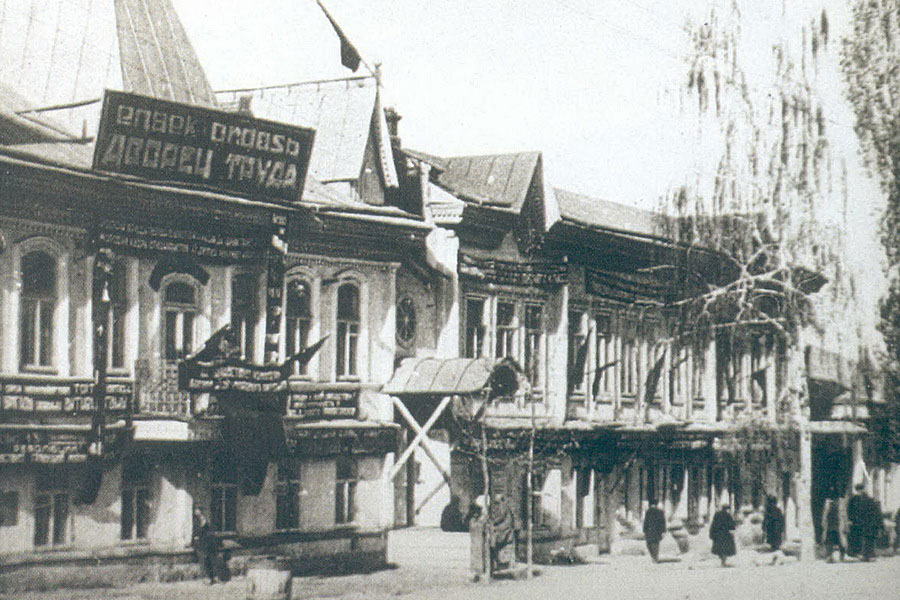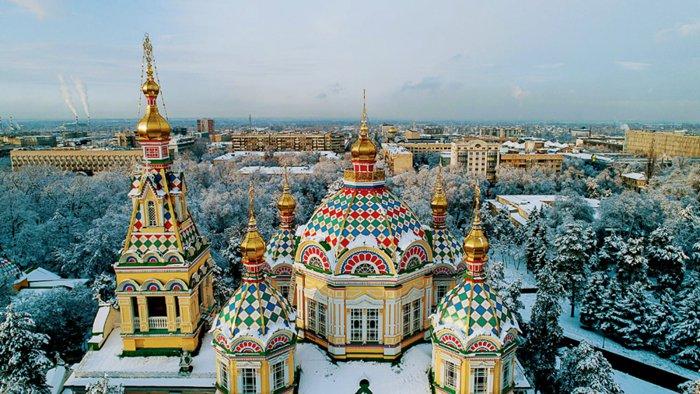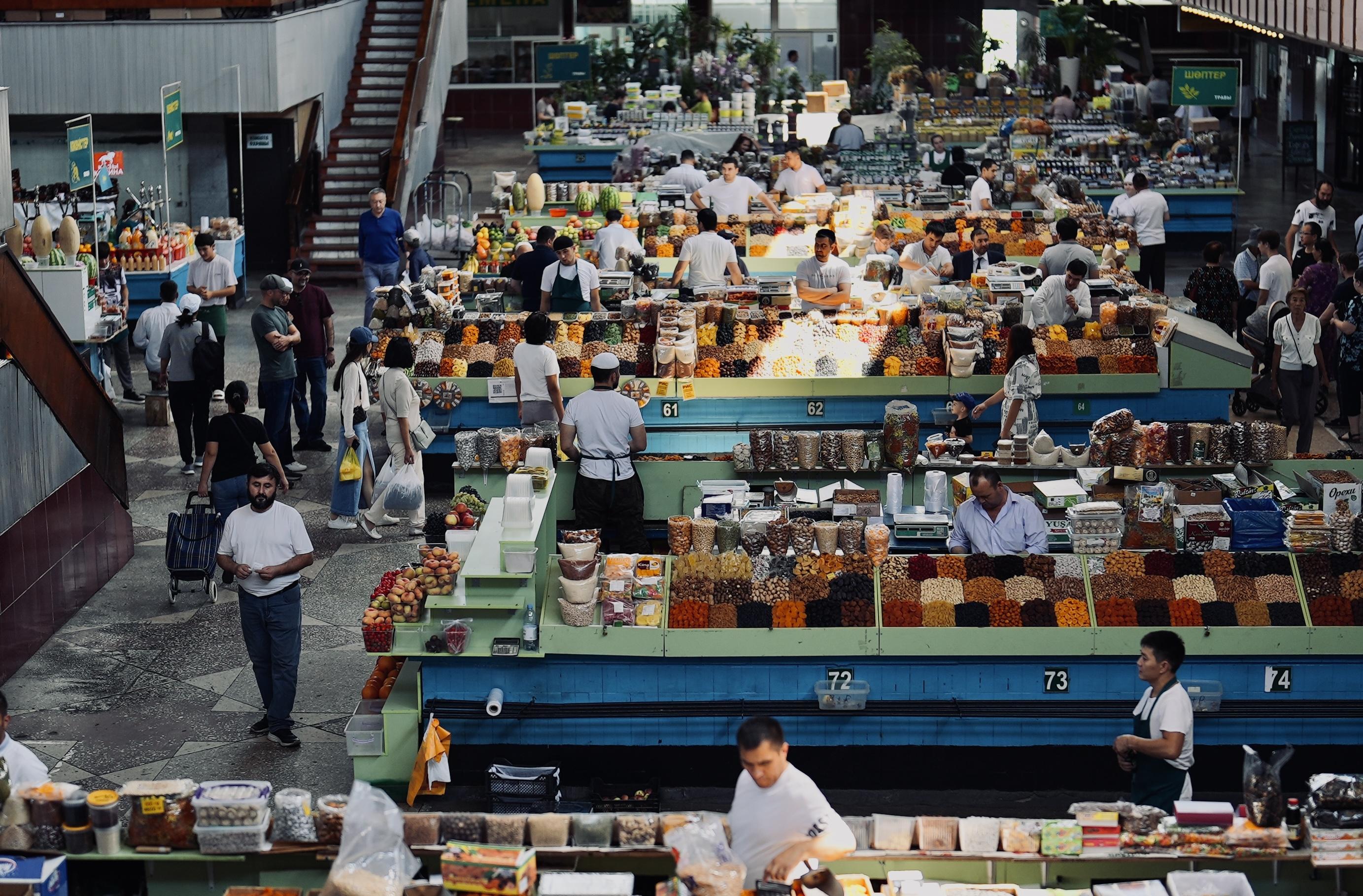POPULATION
2.249.500
CURRENCY
KAZAKHSTANI TENGE
TIMEZONE
GMT +5:00
LANGUAGE
KAZAKH
WEATHER
JULY 24ºC /
JANUARY -6ºC
AIRPORTS
Almaty International Airport
HISTORICAL IMPORTANCE OF ALMATY
Almaty, the largest city in Kazakhstan, holds significant historical importance as a former key hub on the Silk Road and a Bronze Age settlement site. Established as a fort by the Russian Empire in 1854 and later becoming the capital of the Kazakh SSR in 1929, Almaty flourished as an administrative, industrial, and cultural center during the Soviet era. Despite losing its capital status to Astana in 1997, Almaty remains Kazakhstan's economic powerhouse and a vibrant multicultural hub. The city is notable for its rich architectural heritage, prestigious educational institutions, and as the site of the pivotal 1986 Jeltoqsan protests, reflecting its enduring legacy in Kazakhstan's history.

RICH WITH APPLES
The name "Almaty" is derived from the Kazakh word "alma," which means "apple," and the suffix "-ty," which implies abundance. Hence, "Almaty" translates to "rich with apples" or "place of apples." This name reflects the region's historical association with apple orchards and the belief that the wild apple, Malus sieversii, which is considered an ancestor of the modern domesticated apple, originates from the area around Almaty. This botanical heritage highlights the city's rich natural environment and historical significance in the cultivation of apples.
THE BEST TIME TO VISIT ALMATY
The best time to visit Almaty is during the spring (April to June) and autumn (September to October) months. In spring, the weather is mild, with blooming flowers and lush greenery, making it ideal for outdoor activities and sightseeing. Autumn offers pleasant temperatures, vibrant fall foliage, and a range of cultural events and festivals. These seasons provide comfortable weather conditions, avoiding the extremes of Almaty's hot summers and cold winters, allowing visitors to fully enjoy the city's natural beauty, historical sites, and cultural attractions.
TRANSPORTATION TO ALMATY
Transportation to Almaty is well-developed, making the city easily accessible both domestically and internationally. Almaty International Airport, one of the busiest in Central Asia, connects the city to major global destinations with numerous flights operated by various international and regional airlines. The city is also a central hub for Kazakhstan's extensive rail network, with trains linking Almaty to other major cities within the country and neighboring regions. Additionally, Almaty is well-served by an extensive network of highways and roads, facilitating travel by car and bus. Within the city, public transportation options include buses, trolleybuses, and a metro system, ensuring convenient movement for residents and visitors alike.
OLD CAPITAL
Almaty served as the capital of Kazakhstan from 1929, when it replaced Kyzylorda during the Soviet era, until 1997, when the capital was moved to Astana (now Nur-Sultan). During its tenure as the capital, Almaty underwent significant development, becoming the administrative, cultural, and economic heart of Kazakhstan. The city's infrastructure was modernized, and it saw the construction of numerous governmental, cultural, and educational institutions. Almaty played a crucial role in shaping the national identity and political landscape of Kazakhstan, hosting key political events, including the 1986 Jeltoqsan protests, which were a precursor to the country's independence. Although no longer the capital, Almaty remains a vital and dynamic city, continuing to lead as Kazakhstan's largest metropolis and main economic center.
THINGS TO DO AND PLACES TO VISIT




WHAT TO EAT IN ALMATY

KUYRDAK
Kuyrdak is a traditional Kazakh dish made from fried and stewed offal, typically including liver, heart, kidneys, and lungs of lamb, beef, or horse meat. This hearty and rustic dish is seasoned with salt, pepper, and spices like cumin or coriander, and often includes onions and potatoes for added flavor and texture. The offal is first browned to develop a rich, savory taste, then combined with vegetables and cooked until tender. Kuyrdak reflects the resourcefulness of Kazakh nomadic cuisine, making use of every part of the animal, and is often enjoyed during family gatherings and special occasions, embodying the warm, nourishing spirit of traditional Kazakh hospitality.

LAGMAN
Lagman is a cherished dish in Central Asian cuisine, renowned for its hearty and aromatic qualities. It features handmade noodles, boiled to perfection and served in a savory broth infused with meat (commonly lamb or beef), assorted vegetables (such as bell peppers, carrots, and tomatoes), and robust spices like cumin and paprika. The dish is meticulously prepared, with the meat and vegetables stir-fried to enhance their flavors before being combined with the noodles and broth. Lagman is typically garnished with fresh herbs like cilantro or green onions, adding a vibrant finish to its complex and satisfying taste. This beloved dish not only embodies the culinary traditions of Central Asia but also reflects the region's historical crossroads of cultural exchange and trade along the ancient Silk Road.

SHASHLIK
Shashlik is a beloved skewered meat dish originating from Central Asia and the Caucasus region, characterized by its tender, marinated cubes of lamb, beef, or chicken grilled over charcoal or an open flame. The meat is typically marinated in a blend of vinegar, oil, spices like paprika and cumin, and sometimes garlic, imparting a robust flavor. The grilling process caramelizes the exterior while keeping the interior juicy and flavorful. Served hot off the skewers, shashlik is often accompanied by fresh herbs, sliced onions, and flatbread, making it not only a delicious meal but also a communal experience deeply rooted in cultural traditions of hospitality and outdoor gatherings.

SHUBAT
Shubat, also known as chal, is a traditional fermented dairy beverage originating from Central Asia, particularly among Kazakhs and Kyrgyz. It is made from fermented camel's milk, known for its distinctive sour taste and health benefits. The fermentation process gives shubat its characteristic tangy flavor, similar to other fermented dairy products like kefir. In Central Asian nomadic cultures, shubat was historically consumed as a nutritious drink, rich in probiotics and vitamins, particularly during the summer months when fresh milk was abundant. Today, shubat remains a symbol of cultural heritage and is enjoyed for its unique taste and reputed health benefits in the region.

ZHENT
Zhent is a traditional Kazakh sweet treat that holds cultural significance in Kazakhstan. It is made from crushed wheat, butter, sugar, and often includes nuts such as walnuts or almonds. The ingredients are mixed together to form a dough-like consistency, which is then shaped into small balls or patties. Zhent is typically enjoyed as a dessert or a snack, appreciated for its rich, sweet flavor and satisfying texture. It represents a traditional delicacy in Kazakh cuisine, reflecting the nomadic heritage where ingredients like wheat and nuts were staples that provided sustenance and energy in the harsh Central Asian landscape. Today, zhent continues to be cherished for its taste and cultural symbolism, often served during festive occasions and gatherings in Kazakhstan.
HOW MANY DAYS SHOULD YOU SPEND IN ALMATY?
For a comprehensive experience of Almaty, plan to spend at least 3 to 4 days exploring this vibrant city. Begin by immersing yourself in its cultural heart at Panfilov Park, home to the striking Zenkov Cathedral, and delve into Kazakhstan's history at the Central State Museum. Indulge in the sensory delights of the Green Bazaar, where you can sample local delicacies and shop for souvenirs. Ascend Kok-Tobe Hill via cable car for panoramic city views and leisure activities, and venture further to Medeu Skating Rink and Shymbulak Ski Resort for seasonal outdoor adventures. Consider a day trip to the stunning Charyn Canyon or Big Almaty Lake to experience Kazakhstan's natural beauty. Throughout your stay, savor traditional Kazakh cuisine at local restaurants, and take time to explore Almaty's modern and historical landmarks, ensuring a well-rounded and memorable visit to this dynamic city.
